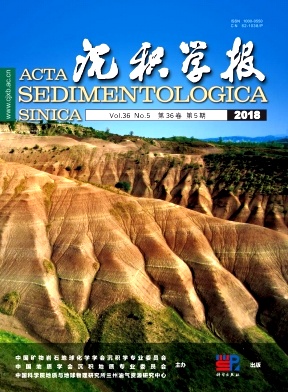Experimental Simulation for Dissolution of Cretaceous Tight Sand Rocks as Deep Reservoir in Kuqa Depression
doi: 10.14027/j.issn.1000-0550.2018.079
- Received Date: 2017-08-07
- Rev Recd Date: 2017-11-09
- Publish Date: 2018-10-10
-
Key words:
- Kuqa depression /
- Cretaceous /
- tight sand reservoir /
- dissolution /
- experimental simulation
Abstract: The sandstone reservoirs in the Kuqa foreland area of Tarim Basin have the characteristics of very low physical properties, strong heterogeneity and high-stable production, in which the dissolution of reservoir rocks is significant, but their formation mechanism is not very clear by far. A series of thermal simulation experiments under high temperature and high pressure were performed to restitute the dissolution effects of target layers in addition of one epidiagenetic fluid and two kinds of burial fluids for a better understanding of the diagenetic process, and then to realize the diagenetic evolution of minerals and spatial changes of reservoir structures. In the epidiagenetic stage, there was weak acidic fluid environments leached by atmospheric fresh water and replaced with saturated CO2 solution (pCO2=1 MPa) in the experiment. The results showed that the dissolution was very significant and feldspar minerals emerged significant dissolution, while the quartz and clay minerals were relatively insoluble. Na+, Ca2+ and K+ were separated out more obviously with Si4+ and Al3+ less. Many suspected polygonal quartz and aluminosilicate minerals have precipitated on the sample surface. The dissolution was secondary in the acidic environment (instead by acetic acid solution, 2 mL/L) formed by hydrocarbons filling in the later diagenetic stage and dolomite, gypsum and feldspar minerals were easily to be dissolved. Ca2+, Mg2+, Na+ and Si4+ were separated out apparently without precipitation. The dissolution is relatively weak in NaHCO3 solution (pH=7.46, HCO3-=0.6 mol/L) which is instead of the alkaline environment of early-middle diagenetic stage and the dissolution of quartz, feldspar and clay minerals appeared in different degrees which increase with the increase of temperatures and pressures. Comprehensive analysis showed that superficial fluid was the key factor for dissolved pore development of sandstone reservoirs in the study area, followed by organic acid and alkaline buried fluid. This understanding not only enriches the theory of porosity and genesis evolution of tight sandstone reservoirs, but also provides theoretical support for the next prospecting of scale reserves and effective development of gas fields.
| Citation: | ZENG QingLu, ZHANG RongHu, WANG LiBao, ZHAO JiLong, SHE Min. Experimental Simulation for Dissolution of Cretaceous Tight Sand Rocks as Deep Reservoir in Kuqa Depression[J]. Acta Sedimentologica Sinica, 2018, 36(5): 946-956. doi: 10.14027/j.issn.1000-0550.2018.079 |






 DownLoad:
DownLoad: